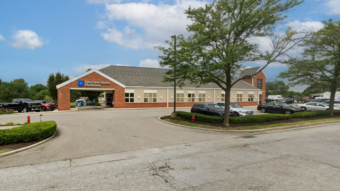A diverse economy is a strong economy, which is why many in the Chicago area would like to see more development in the lab sciences. After all, it’s one sector that is projected to explode in demand over the coming years.
A recent JLL report found that Boston, the Bay Area and San Diego retained their positions as top life science ecosystems in the nation. Chicago barely made this list, coming in at 13, even though it is home to world renowned pharma and life science firms such as Abbott, Abbvie, Baxter and Pfizer—and two national labs in Argonne and Fermilab. For Chicago to be in contention for venture capital investment, the landscape has to change in order to attract such capital.
So what do those companies with a heavy lab science component seek out first? As with anything else in real estate, location. Most of the metro’s biotechnology firms are in the North Shore. But as Jeff Janicek, vice president at Skender points out, the types of startup firms that venture capital would be backing will almost exclusively be composed of younger individuals, from graduate students in their early 20s to young professionals in their mid-30s.
“They want to live in cool, hip areas,” Janicek said. “They don’t necessarily want to live where all the corporate offices are in the northwest suburbs because they just can’t afford it.”
While the opportunity to expand Chicago’s lab sciences footprint may be in trendy neighborhoods on the fringes of the CBD such as Fulton Market, The 78, Lincoln Yards and Goose Island, the path of least resistance is to locate in and around existing lab science clusters. Broadening Chicago’s offerings may require new thinking.
“In general, when we talk about CBD versus suburban in the major markets, there’s really a gravitational pull towards the current clusters,” said Ken Richter, western regional president, Project Management Advisors. “Often that’s really grounded by the educational facilities they are clustered around. There will likely be a little different equation for newer life science space.”
The one advantage that Chicago has is that those trendy neighborhoods are rife with the types of properties that can be redeveloped for a lab science user. There is a lot of overlap between the characteristics of the existing building stock and the characteristics that an end user is looking for.
Most labs are built on floor plates of between 20,000 and 30,000 square feet. This is due to safety factors as well as how labs zone their workspace, usually with a racetrack design that allows ease of movement from laboratory to office space. They also need extremely robust HVAC systems.
“The cleaner the lab, the more air changes they need,” said Ken Wardingley, principal, Wright Heerema Architects. “Some of them are actually 100 percent outside air.”
When it comes to redevelopment, few existing properties are going to have the air handling needs of a modern lab. But the ability to add that capacity is easier in some properties than in others. A single-, two- or three-story building makes it much easier to run a shaft to the roof to dispose of all the air that a lab will need to ventilate.
Other critical components are heavy utility infrastructure, electrical as well as water and waste, and higher ceilings that can accommodate the necessary mechanicals. Taking these features into account—medium to large floor plates, mid-rise building, proper zoning and proximity to trendy communities—it becomes clear that Chicago has an abundance of neighborhoods and building product that can be converted to lab space.
There are a number of new-build lab spaces in various stages of delivery around the Chicago market. For example, Trammell Crow Company is constructing a 420,000-square-foot, 16-story laboratory facility in Fulton Market and Related Midwest is teaming with The University of Illinois System’s Discovery Partners Institute to construct a 12-story lab innovation space at The 78 in the South Loop.
There are examples of redeveloped lab space too, however. Skender recently wrapped base-building work and a tenant’s biotech lab space in Sterling Bay’s Lincoln Park life sciences project, The Labs at 2430 N. Halsted Street. Depending on the end user, both approaches can and will work. But redevelopment does come with speed to market benefits.
“The duration to get new build construction permits, I mean two years is not unheard of,” Richter said. “Redeveloping has potential time and cost advantages. On the revenue side you’ll typically see a delta between converted and new that may or may not be commensurate with costs.”
Any new construction is going to want to maximize profitability by building up, but there are limitations to taller structures. For example, the higher you go in a building, the fewer chemicals you can store due to life safety concerns, which limits the available uses on higher stories. Chicago’s ground-up lab projects will no doubt have little trouble attracting young firms. For others, however, the pull will be toward redeveloped properties.
“Life science space is the darling of the industry right now,” Richter said. “I think Chicago, with its history as a manufacturing and warehousing hub, has plenty of buildings that can be repurposed.”




